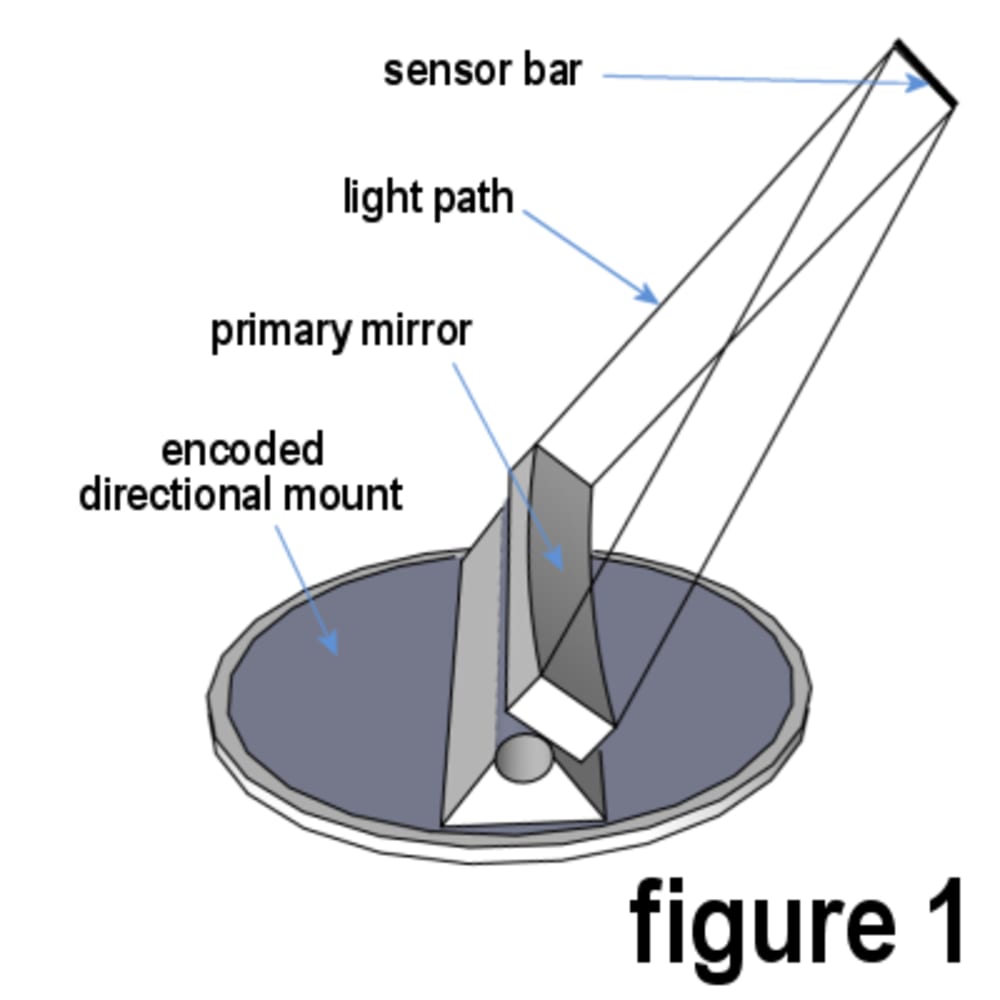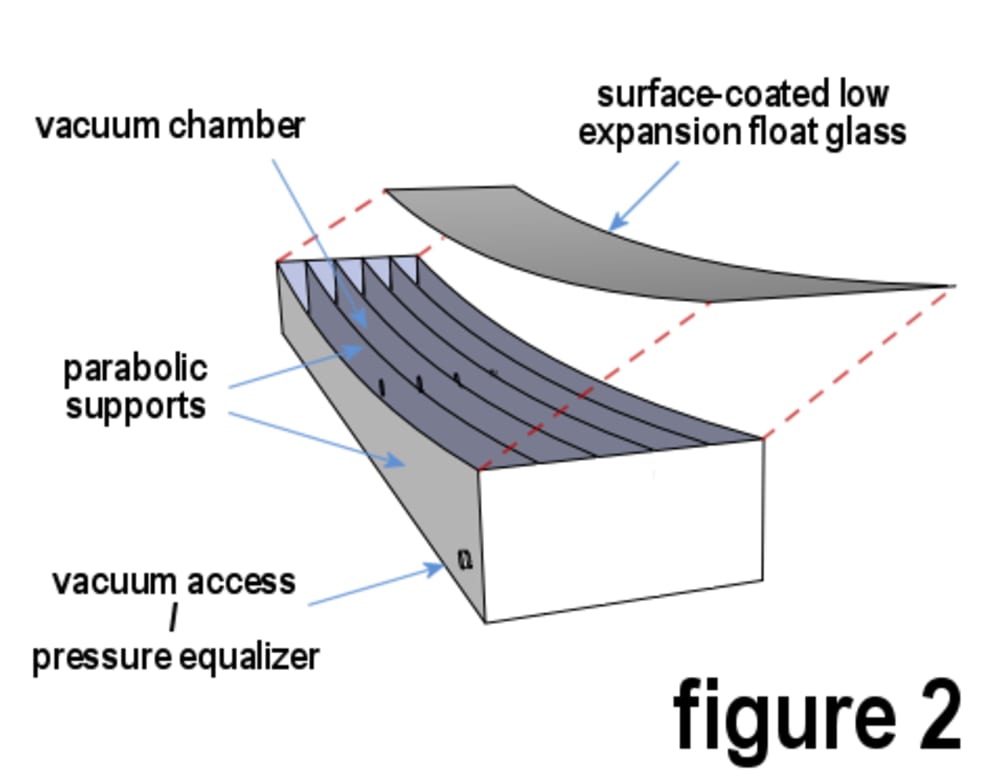This telescope design consists of a primary mirror shaped to a parabola along a single axis. Whereas a conventional telescope focuses light to a single point, the Single-Axis Telescope spreads its focus along a sensor the same width as the mirror.
I call this a scanning telescope because it is designed to be stationary, using the rotation of the Earth as its scanning mechanism.
This design has four major advantages over conventional prime focus CCD reflector telescopes.
Wide Sensor
The elongated sensor (CCD) greatly improves heat dissipation, allowing for much faster capture rates and less thermal noise.
Stability
Conventional telescopes use motors on an equatorial mount to track areas of the sky. A wider sensor with faster frame rates lets us mount the telescope in a stationary position scanning the sky with absolutely no moving parts to cause vibration or tracking error.
No Obstruction
Most reflector telescopes use either a mirror or sensor mounted in the center of the aperture causing a loss of contrast. Moving the sensor to a point outside the aperture requires complex mirror shaping techniques.
Since the Single-Axis Telescope mirror is only parabolic along one plane, the sensor can be skewed on the perpendicular axis anywhere along its focal point (focal line) as long as it is parallel to the perpendicular plane. Mounting the sensor at a skew of half the mirror’s width will remove it from the aperture.
Adjustable Effective Focal Length
Unlike conventional telescopes, this design allows us to change the field of view (size of the area being viewed) without additional optics or loss of light. When the sensor is aligned longitudinally or North-South, we get the maximum field of view. If we point the telescope to the same area of the sky with its sensor aligned NW-SE, our field of view is significantly smaller and light from objects in the sky pass over more of the pixels in the sensor. The more latitudinally oriented, the smaller the field of view and greater the resolution.
Encoders in the directional mount can tell the software how to correctly handle the skew of the scan according to the deviation from North-South.
Figure 1 shows the optics and a simple mount for prime viewing. To change the field of view in any direction another pivot must be added to the mount.
As for manufacturing, the sensor, electronics and software should be available from manufacturers of flat bed office scanners. Most of the manufacturing will revolve around the primary mirror.
A well performing telescope mirror needs to be shaped to very exacting tolerances. Although the best mirrors are ground and polished from a single piece of solid low-expansion material, it should also be possible to build the primary mirror by vacuum-adhering a surface coated mirror of a sufficiently consistent thickness to a parabolic structure as shown in figure 2.
Like this entry?
-
About the Entrant
- Name:Scott Jordan
- Type of entry:individual
- Software used for this entry:SketchUp
- Patent status:none





